The Nature Conservancy
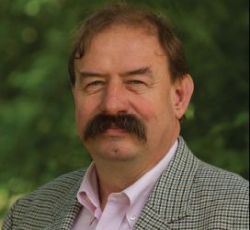
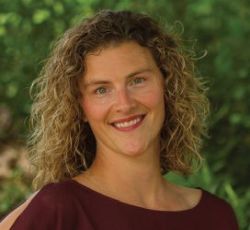
Richard Bowman and Kari Marciniak.
The Nature Conservancy is a global organization with a mission to "conserve the lands and waters on which all life depends." The organization employs more than 600 scientists, works in 69 countries, and is on the Forbes list of 50 largest U.S. charities. The Conservancy is working in five strategic priority areas around the world: water, climate, land conservation, cities, and oceans.
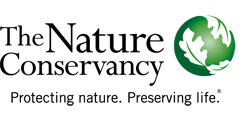
The Conservancy's Michigan chapter, located in Lansing, has a long history of partnering with MSU, completing approximately 15 projects in recent years. Currently, the Institute of Water Research (IWR) is a primary, multi-project partner. The partnership is focused on applying research and developing tools that facilitate conservation action in the field.
"We rely on MSU for technical expertise," said Rich Bowman, director of government relations for the Conservancy in Michigan. "We have our own scientists on staff—at least half a dozen in Michigan—but the University is an important complement to that."
"Our relationship with IWR started about 12 years ago," said Bowman. "I was serving on the Michigan Groundwater Conservation Advisory Council. IWR was building the Water Withdrawal Assessment ToolExternal link - opens in new window that the state now uses to assess the impact of high capacity water withdrawals. I talked to [IWR director] Jon Bartholic about other tools they had in development and the result was a partnership project between IWR, the Conservancy, and Coca-Cola in the Paw Paw River watershed. The Paw Paw Recharge Calculator, developed as part of that project, allowed us to say to a farmer, 'If you change your conservation practices, here's how much recharge will happen.'"
The science and strategic modeling have paid off in terms of information that is highly valued for decision-making and long-term planning. For example, said Bowman, "One conservation practice that's gaining in popularity is cover crops. Cover crops do a lot, including keeping soil in place, sequestering nutrients, even sometimes helping control weeds in subsequent crops, but in the Paw Paw River watershed we discovered that tillage without cover crops has more recharge than it does with them, because the cover crops themselves utilize and transpire water. So if recharge was your only concern, you'd advise against cover crops, but there are so many other benefits in terms of soil health and nutrient and sediment management that we still advocate for using them in most situations."
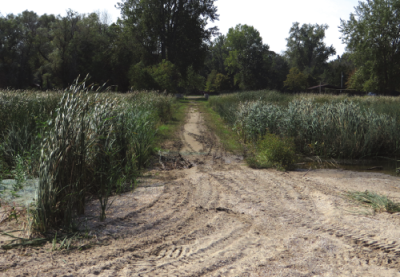
The Nature Conservancy and IWR now have a much larger project in the Saginaw Bay watershed, in partnership with the Michigan Agri-Business Association. "It's the same type of work with growers, using IWR's Great Lakes Watershed Management System (GLWMS) to help them put the right conservation practices on fields where the ecological returns will be greatest," said Bowman. We're not the only ones using the GLWMS; it covers Saginaw Bay, western Lake Erie, Green Bay, Wisconsin, and the Genesee County watershed in upstate New York."
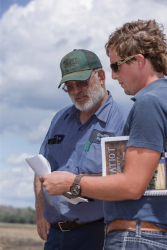
Farmer and technician in Saginaw Bay Watershed agriculture.
When asked what the Conservancy is learning from these projects, Bowman said, "We're learning how to make science relevant to people; the University is very good at that." In turn, when asked what he thinks the University values about the partnership, he laughed and said, "They say we bring them tough problems to figure out."
Kari Marciniak, director of strategic communications for the Conservancy's Michigan chapter, noted, "There's also the translational benefit. The academic realm generates the science, the Conservancy identifies issues to be addressed in the field, and together we figure out how to best apply knowledge. Developing tools is one of the most effective ways we have found to disseminate that knowledge."
Jeremiah Asher, director of information/decision support technology at IWR, said, "I would describe our relationship with the Nature Conservancy as very fruitful. We bring different skill sets to the table that together provide more effective solutions to support planning and conservation efforts in the Great Lakes Basin. What I value most about the Conservancy is their ability to further connect our work with groups like Coca-Cola, Michigan Agri-Business Association, Keurig, and others. These expanded connections help generate new ideas and ways to apply our tools and technologies, continually moving our work into new frontiers."
The Conservancy continually tries to maintain the balance between making something simple and making it comprehensive. "Good scientists—including ours—want to consider all the variables and scenarios. Folks in the field want to answer a question efficiently and effectively," said Marciniak. "It is important that we focus on the elements of a tool that will allow us to meet both needs." Bowman and Marciniak both agreed that MSU has been helpful in developing this sort of strategic thinking.
A successful project is never guaranteed at the outset of a partnership effort. All partners need to be clear about the resources they can provide, fully commit to achieving the outcomes, and communicate openly throughout the project. "We have been able to bring significant resources to the table—we have had multiple contracts with MSU over the past five years—but success requires constant communication between both entities on each project," said Marciniak.
Bowman's parting advice for faculty members who are interested in partnering outside the University: "It's an adage from St. Francis— Seek first to understand, then to be understood. To be a good partner, understand what your partners want out of the interaction."
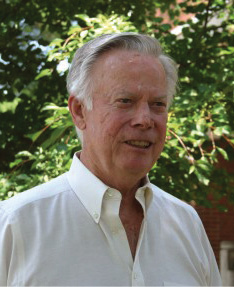
"The world is a coupled system which we in IWR are trying to understand and contribute to by sharing knowledge. In the natural resource and food production arena, coupling with multiple partners is critical. Rich Bowman of the Nature Conservancy discusses the important concept of coupling with the IWR and groups such as the Michigan Agri-Business Association, farm organizations, and federal programs like the Natural Resource Conservation Service. The success of the Nature Conservancy's many efforts—for example with IWR—is indicative of our collective ability to establish strong partnerships for strengthening the enhancement and sustainability of the natural resource and food production system. The partnering process results in a win-win situation for the Conservancy, its partners, producers, and our vitally important natural resources. Progress happens when we all work together!"
Jon Bartholic
Director, MSU Institute of Water Research
- Written by Linda Chapel Jackson, University Outreach and Engagement
- Photos courtesy of Jason Whalen, Doug Lund, and Michael D.-L.Jordan